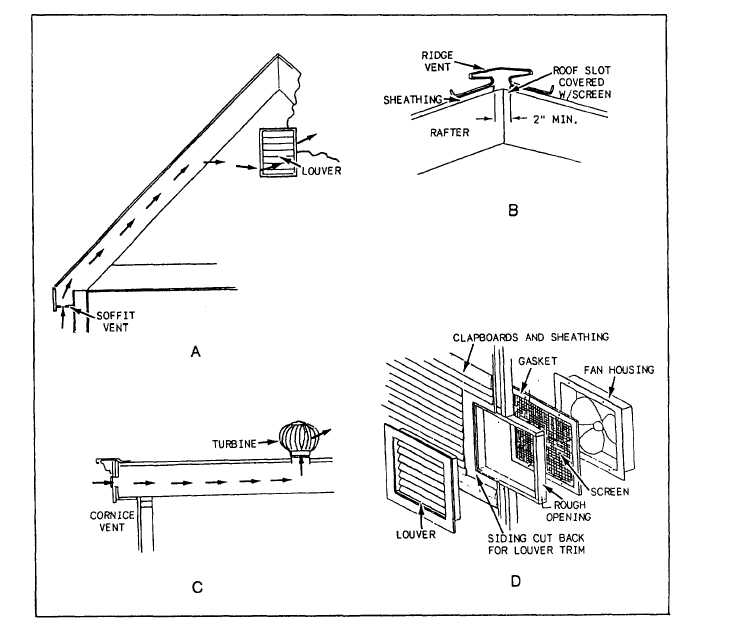Figure 5-31.—Attic outlet vents.
A warm attic that is inadequately ventilated and
lowering the temperature in these spaces. Insulation
insulated may cause formation of ice dams at the cornice
should be used between ceiling joists below the attic or
(fig. 5-30, view A). During cold weather after a heavy
snowfall, heat causes the snow next to the roof to melt.
Water running down the roof freezes on the colder
surface of the cornice, often forming an ice dam at the
gutter that may cause water to backup at the eaves and
into the wall and ceiling. Similar dams often form in roof
valleys. Ventilation provides part of the solution to these
problems. With a well-insulated ceiling and adequate
ventilation (fig. 5-30 view B), attic temperatures are low
and melting of snow over the attic space greatly reduced.
In hot weather, ventilation of attic and roof spaces
offers an effective means of removing hot air and
roof space to further retard heat flow into the rooms
below and materially improve comfort conditions.
It is common practice to install louvered openings
in the end walls of gable roofs for ventilation. Air
movement through such openings depends primarily on
wind direction and velocity. No appreciable movement
can be expected when there is no wind. Positive air
movement can be obtained by providing additional
openings (vents) in the soffit areas of the roof overhang
(fig. 5-31, view A) or ridge (view B). Hip-roof
structures are best ventilated by soffit vents and by outlet
ventilators along the ridge. The differences in
5-25

